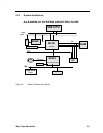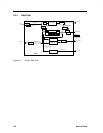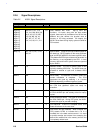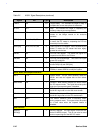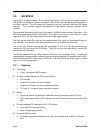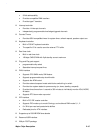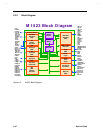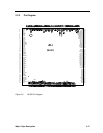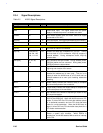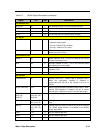
2-12 Service Guide
Table 2-2 M1521 Signal Descriptions (continued)
Signal Pin Type Description
TRDYJ E8 I/O Target Ready. This indicates the target is ready to
complete the current data phase of transaction.
STOPJ E11 I/O Stop. This indicates the target is requesting the
master to stop the current transaction.
LOCKJ E5 I/O Lock Resource Signal. This indicates the PCI
master or the bridge intends to do exclusive
transfers.
REQJ[3:0] D13, D11, D9, D7 I Bus request signals of PCI Masters. When asserted,
it means the PCI master is requesting the PCI bus
ownership from the arbiter.
GNTJ[3:0] D14, D12, D10, D8 O Grant signals to PCI Masters. When asserted by the
arbiter, it means the PCI master has been legally
granted to own the bus.
PHLDJ D4 I PCI bus hold request. This active low signal is a
request from M1523 for the PCI bus.
PHLDAJ D5 O PCI bus hold acknowledge. This active low signal
grants PCI to M1523.
PAR E12 I/O Parity bit of PCI buses. It is the even parity bit
across PAD[31:0] and CBEJ[3:0].
SERRJ E13 O System Error. If the M1521 detects parity errors in
DRAMs, it asserts SERRJ to notify the system.
Clock, Reset, and Suspend Interfaces
RSTJ T15 I System Reset. This pin, when asserted, resets the
M1521 and sets the register bits to their default
values.
SUSPENDJ P6 I Suspend. When actively sampled, the M1521 enters
the I/O suspend mode. This signal should be pulled
high when the suspend feature is disabled.
HCLKIN K16 I CPU Bus Clock Input. This signal is used by all of
the M1521 logic that is in the host clock domain.
PCLKIN E10 I PCI Bus Clock Input. This signal is used by all of
the M1521 logic that is in the PCI clock domain.
32K W17 I The refresh reference clock of frequency 32khz
during suspend mode. This signal should be pulled
to a fixed value when the suspend feature is
disabled.
UMA Interface
MREQJ/
REQJ[4]
H6 I Memory Request. This input signal is from the GUI
device’s MREQJ output. This pin can also be used
as bus request signal of the fifth PCI master.




